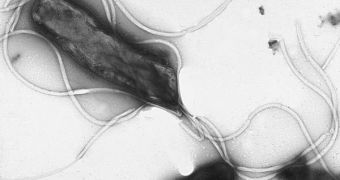Bacteria are the most helpful and the most harmful organisms for the human body in the world today. While the thousands of species in our guts keep us healthy, and help us digest food, other species, just as numerous, can cause us significant damage, and even death. Therefore, knowing how these microorganisms function is essential to keeping us safe. Currently, research teams are taking the first steps towards understanding how bacteria function, and how their cell cultures function. American researchers have recently made an important find in this field, PhysOrg reports.
Experts from the University of California in San Diego (UCSD) found a way of using mass spectrometry – an observations technique that is regularly use to determine the properties of very small structures – to observe the communication channels that form between various cell cultures, including those formed by bacteria. A study detailing the finds appears in the November 8 issue of the respected scientific journal Nature Chemical Biology. The paper was authored by UCSD Skaggs School of Pharmacy and Pharmaceutical Sciences assistant professor Pieter C. Dorrestein.
“Scientists tend to study the metabolic exchange of bacteria, for example penicillin, one molecule at a time. Actually, such exchanges by microbes are much more complex, involving 10, 20 or even 50 molecules at one time. Now scientists can capture that complexity,” the expert says. He and his team used a complex technique known as natural product MALDI-TOF (Matrix Assisted Laser Desorption Ionization-Time of Flight) imaging mass spectrometry, in order to make the observations. This allowed the investigators to, in essence, understand the cryptic “language” of bacteria.
“Our ability to translate the metabolic output of microbes is becoming more important, as they outnumber other cells in our body by a 10 to one margin. We want to begin to understand how those bacteria interact with our cells. This is a powerful tool that may ultimately aid in understanding these interactions,” the team leader adds. The experts are currently engaged in a massive effort that will see most of the messages bacteria exchange between them deciphered and cataloged. The database would then form the basis for completely new therapies against the microorganisms, which could see diseases ranging from cancer to diabetes and allergies being addressed from different perspectives.

 14 DAY TRIAL //
14 DAY TRIAL //